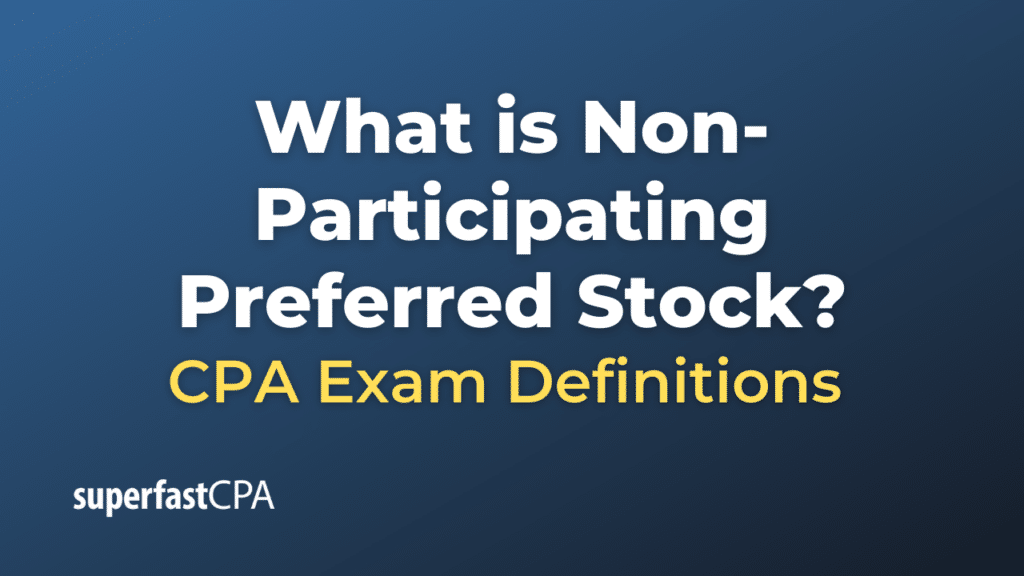Non-Participating Preferred Stock
Non-participating preferred stock, often simply referred to as non-participating preferred, is a type of preferred stock that entitles the holder to a fixed dividend, and nothing more. This means that the holder of non-participating preferred stock does not have the right to participate in any additional earnings or dividends beyond the fixed dividend rate stated on the stock certificate.
When a company declares dividends, non-participating preferred stockholders receive their fixed dividends before any dividends are paid to common shareholders. However, if the company has surplus earnings and decides to distribute extra dividends, non-participating preferred shareholders will not receive any portion of these extra dividends. Instead, these surplus dividends are distributed among common shareholders.
In the event of company liquidation, non-participating preferred shareholders have a higher claim on assets and earnings than common shareholders. However, their claim is limited to the par value of the preferred shares plus any unpaid dividends, and they do not participate in any remaining assets that might be distributed among common shareholders.
In contrast, participating preferred shareholders receive their fixed dividends and also have the right to participate in surplus earnings or dividends along with common shareholders. They also have the right to participate in the distribution of remaining assets after liquidation, beyond the par value of their shares and unpaid dividends.
Thus, the primary difference between participating and non-participating preferred stock lies in the participation rights in surplus dividends and liquidation assets.
Example of Non-Participating Preferred Stock
Let’s consider a hypothetical company, EcoFarms, which has both non-participating preferred stock and common stock issued.
EcoFarms’s non-participating preferred stock has a par value of $50 per share and a fixed dividend rate of 5%. This means each preferred share receives a fixed annual dividend of $2.50 ($50 * 5%).
Suppose EcoFarms declares $200,000 in total dividends for the year. Also, let’s say EcoFarms has 20,000 shares of non-participating preferred stock and 80,000 shares of common stock outstanding.
As non-participating preferred shareholders have preference in dividend distribution, they receive their dividends first. So, the total dividends paid to preferred shareholders would be $50,000 (20,000 shares * $2.50 per share).
After paying the preferred dividends, the remaining dividends ($200,000 – $50,000 = $150,000) are available for common shareholders. Therefore, each common share receives a dividend of $1.875 ($150,000 / 80,000 shares).
If EcoFarms has an exceptionally profitable year and decides to distribute an additional $50,000 in dividends, the non-participating preferred shareholders would not receive any part of this extra distribution. The additional dividends would be distributed only among the common shareholders.
In the case of liquidation, non-participating preferred shareholders would receive their par value ($50 per share) plus any unpaid dividends before any distribution to common shareholders. However, they wouldn’t share in any remaining assets after that, which would go to common shareholders.
This example illustrates the key characteristics of non-participating preferred stock: preference in receiving dividends (up to a fixed amount) and in liquidation, but without any share in additional profits or assets beyond their fixed dividends and par value.













